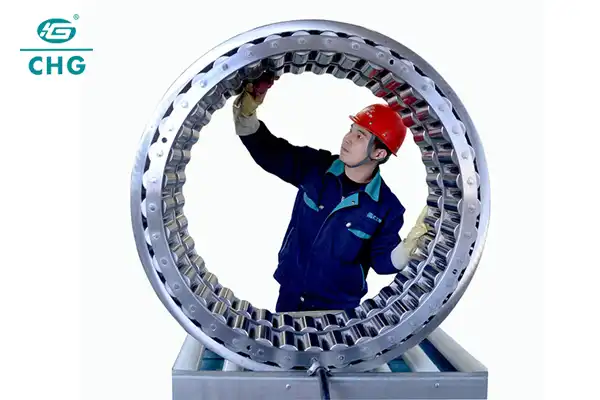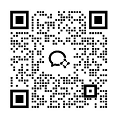Can Double Row Cylindrical Roller Bearings Accommodate Misalignment?
Misalignment is a common challenge in bearing applications, potentially leading to premature failure and reduced operational efficiency. Double row cylindrical roller bearings, known for their exceptional load-carrying capacity and rigidity, are often selected for demanding industrial applications. However, a critical consideration when choosing these bearings is their ability to handle misalignment in the shaft or housing. This article explores the misalignment tolerance of double row cylindrical roller bearings, their design features related to misalignment accommodation, and best practices for managing misalignment in applications utilizing these specialized bearing types.

What Are the Design Features of Double Row Cylindrical Roller Bearings That Affect Misalignment Tolerance?
Understanding the specific design characteristics of double row cylindrical roller bearings is essential to assessing their misalignment capabilities. These design elements directly influence how well the bearing can accommodate shaft or housing misalignment while maintaining performance and longevity.
Roller Profile and Crown Design
The roller profile in double row cylindrical roller bearings plays a crucial role in determining misalignment tolerance. Modern double row cylindrical roller bearings often feature a slight crown or modified profile on the rollers. This crown creates a slightly convex shape that helps distribute load more evenly under misaligned conditions. When misalignment occurs, the crowning prevents edge loading, which would otherwise cause stress concentration at the roller ends. Leading manufacturers of double row cylindrical roller bearings design the roller profile with sophisticated mathematical models to optimize this balance, typically allowing for misalignment tolerances ranging from 2 to 4 arcminutes depending on the specific bearing series and size.
Cage Design and Roller Guidance
The cage design significantly impacts the ability of double row cylindrical roller bearings to accommodate misalignment. High-quality cages provide precise roller guidance while allowing sufficient freedom for the rollers to adjust their position slightly when misalignment occurs. Most double row cylindrical roller bearings use machined brass cages, polyamide cages, or pressed steel cages, each offering different benefits for misalignment scenarios. For example, machined brass cages provide excellent strength and heat resistance while maintaining tight tolerances, whereas polyamide cages offer some flexibility that can be beneficial in minor misalignment conditions. The interaction between the cage and rollers becomes increasingly critical as speed increases, with higher speeds generally reducing the bearing's tolerance for misalignment.

Internal Clearance Specifications
Internal clearance is a fundamental specification in double row cylindrical roller bearings that directly impacts misalignment accommodation. The internal radial clearance provides some room for adjustment during misalignment. Bearings with greater internal clearance can typically accommodate more misalignment, but excessive clearance can lead to reduced precision and increased vibration. For applications where misalignment is anticipated, specifying a slightly larger internal clearance (such as C3 or C4 rather than standard CN clearance) may be beneficial. Double row cylindrical roller bearings typically offer internal clearance options ranging from C2 (less than standard) to C5 (much greater than standard), with selection depending on operating conditions, load requirements, and expected misalignment.
How Does Misalignment Affect the Performance and Lifespan of Double Row Cylindrical Roller Bearings?
Misalignment can significantly impact bearing performance and longevity. Understanding these effects helps engineers implement appropriate measures to maximize bearing life in applications where perfect alignment may be challenging to achieve or maintain.
Impact on Load Distribution and Stress Concentration
Misalignment in double row cylindrical roller bearings dramatically alters the load distribution across the rolling elements and raceways. In an ideally aligned bearing, load distribution is symmetrical, utilizing the full contact length of the rollers. However, when misalignment occurs, the load becomes concentrated at the edges of the rollers, creating localized stress hotspots. Technical studies have shown that even relatively minor misalignment of 0.001 radians (approximately 3.4 arcminutes) can reduce bearing life by up to 50% due to these stress concentrations. Over time, these stress concentrations lead to accelerated fatigue, pitting, and spalling of the raceway and roller surfaces, significantly shortening the bearing's operational life.

Thermal Effects and Lubrication Challenges
Misalignment in double row cylindrical roller bearings produces uneven friction and heat generation that can compromise both the bearing and its lubrication. The concentrated contact at roller edges creates localized temperature increases that can exceed normal operating temperatures by 20-30°C or more. These "hot spots" accelerate lubricant degradation and reduce viscosity precisely where lubrication is most critical. Additionally, misalignment disrupts the normal oil film formation between rollers and raceways, reducing lubrication effectiveness even when adequate lubricant is present. Studies have demonstrated that misaligned double row cylindrical roller bearings may require up to 50% more frequent lubrication intervals to maintain adequate protection.
Noise, Vibration, and Accuracy Implications
Misalignment in double row cylindrical roller bearings significantly impacts the operating smoothness, vibration characteristics, and rotational accuracy of machinery. When a bearing becomes misaligned, the irregular contact between rollers and raceways creates characteristic vibration patterns with frequencies related to roller passing frequencies and their harmonics. In precision applications such as machine tools utilizing double row cylindrical roller bearings, misalignment of even 0.0005 radians can increase runout by 10-20 micrometers. Acoustically, misalignment manifests as increased noise levels, typically 5-15 dB higher than properly aligned bearings. For equipment requiring high rotational accuracy, such as printing presses or textile machinery with double row cylindrical roller bearings, even minor misalignment can produce unacceptable product quality issues.
What Solutions and Best Practices Exist for Managing Misalignment in Double Row Cylindrical Roller Bearings?
While double row cylindrical roller bearings have limited inherent misalignment capability, various solutions and practices can be implemented to manage misalignment effectively and ensure optimal bearing performance.
Precision Mounting and Alignment Techniques
Achieving proper alignment during the initial installation of double row cylindrical roller bearings is fundamental to their performance and service life. Precision mounting begins with thorough inspection of shaft and housing geometries, ensuring they meet the required tolerances—typically h6 for shafts and H7 for housings in most industrial applications. Professional installers use specialized alignment tools such as dial indicators, laser alignment systems, and feeler gauges to verify and adjust alignment during mounting. For large double row cylindrical roller bearings, thermal mounting techniques that temporarily expand the bearing inner ring through controlled heating facilitate installation without damage. Once mounted, alignment verification should include both radial and axial runout measurements, with acceptable limits generally below 0.05mm for most applications. The investment in precision mounting techniques yields substantial returns through extended bearing life, with studies showing that professionally aligned installations can achieve up to three times the service life of improperly aligned bearings.

Housing and Shaft Design Considerations
The design of housing and shaft components significantly influences the alignment stability of double row cylindrical roller bearings. Engineers should incorporate sufficient structural rigidity in housings to prevent deflection under load. Material selection plays a crucial role, with cast iron providing good dampening characteristics and thermal stability for many industrial applications, while steel housings offer superior rigidity for heavy-load scenarios. For shaft design, stepped configurations with adequate shoulder dimensions help ensure proper axial location of double row cylindrical roller bearings. Surface finish specifications are equally important, with recommended values of Ra 0.8-1.6 μm for bearing seats. Thermal considerations must also factor into designs, particularly for applications with significant temperature gradients that could cause differential thermal expansion. Incorporating appropriate expansion joints or flexible couplings in the system design can help accommodate thermal growth without imposing misalignment on the double row cylindrical roller bearings.
Self-Aligning Solutions and Alternative Bearing Selections
When applications present inherent misalignment challenges that cannot be fully addressed through mounting precision or design improvements, alternative bearing configurations may be more suitable than standard double row cylindrical roller bearings. Self-aligning bearing types, such as spherical roller bearings, can accommodate misalignment of up to 2 degrees, making them ideal replacements in applications where shaft deflection or housing distortion is unavoidable. For less severe misalignment scenarios, double row cylindrical roller bearings can be used in conjunction with specialized housing designs that incorporate spherical seating to provide some self-alignment capability. Another approach involves using floating bearing arrangements where one double row cylindrical roller bearing provides location while another is allowed axial freedom to accommodate thermal expansion and minor misalignment. When double row cylindrical roller bearings must be used despite misalignment concerns, supplementary systems such as continuous monitoring of vibration and temperature can provide early warning of developing problems, allowing for timely maintenance intervention before catastrophic failure occurs.
Conclusion
Double row cylindrical roller bearings have limited inherent capability to accommodate misalignment compared to self-aligning bearing types. Their design prioritizes high load capacity and rigidity rather than misalignment tolerance, typically limiting them to applications where precise alignment can be maintained. Through careful attention to mounting procedures, housing and shaft design, and proper maintenance practices, the negative effects of misalignment can be minimized. For applications where misalignment is unavoidable, alternative bearing types or specialized mounting arrangements should be considered to ensure optimal performance and longevity.
Luoyang Huigong Bearing Technology Co., Ltd. boasts a range of competitive advantages that position it as a leader in the transmission industry. Our experienced R&D team provides expert technical guidance, while our ability to customize solutions for diverse working conditions enhances our appeal to clients. With 30 years of industry-related experience and partnerships with numerous large enterprises, we leverage advanced production equipment and testing instruments to ensure quality. Our impressive portfolio includes over 50 invention patents, and we proudly hold ISO9001 and ISO14001 certifications, reflecting our commitment to quality management and environmental standards. Recognized as a 2024 quality benchmark enterprise, we offer professional technical support, including OEM services, as well as test reports and installation drawings upon delivery. Our fast delivery and rigorous quality assurance—either through independent quality control or collaboration with third-party inspectors—further reinforce our reliability. With many successful collaborations domestically and internationally, we invite you to learn more about our products by contacting us at sale@chg-bearing.com or calling our hotline at +86-0379-65793878.
References
1. Harris, T. A., & Kotzalas, M. N. (2022). Essential Concepts of Bearing Technology: Rolling Bearing Analysis, Sixth Edition. CRC Press.
2. SKF Group. (2023). Rolling Bearings Handbook: Principles of Bearing Selection and Application. SKF Publications.
3. Hamrock, B. J., & Dowson, D. (2021). Ball Bearing Lubrication: The Elastohydrodynamics of Elliptical Contacts. John Wiley & Sons.
4. ISO 15243:2017. (2017). Rolling bearings — Damage and failures — Terms, characteristics and causes. International Organization for Standardization.
5. Palmgren, A. (2021). Ball and Roller Bearing Engineering. SKF Industries, Inc.
6. Schaeffler Technologies AG & Co. KG. (2024). Technical Principles of Cylindrical Roller Bearings: Design, Application, and Maintenance. Schaeffler Group Publications.

